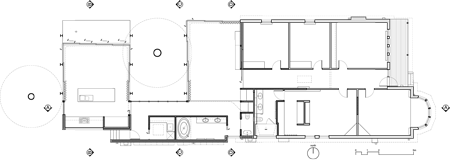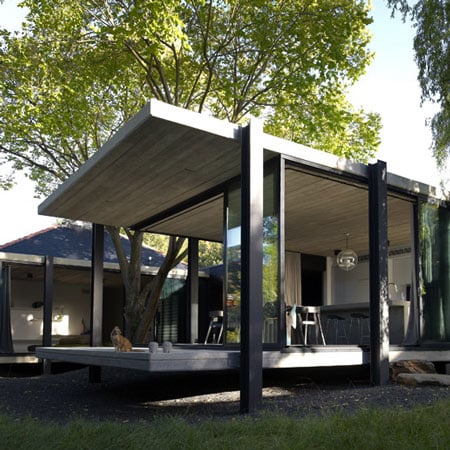
Elm & Willow House by Architects EAT
Melbourne office Architects EAT have completed an extension to a house in Canterbury, Australia, suspended above the ground on steel columns.
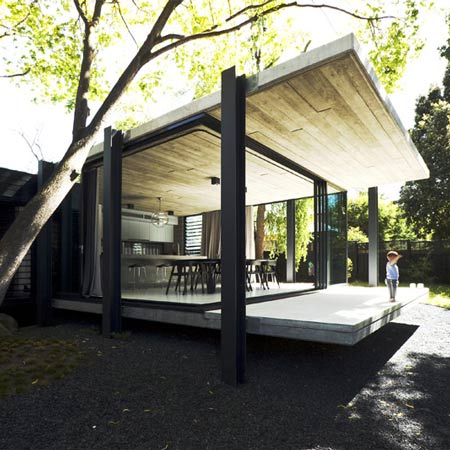
Above photograph is by James Coombe
Called Elm & Willow House, the project involved restoring the Edwardian house and building a u-shaped extension at the back.
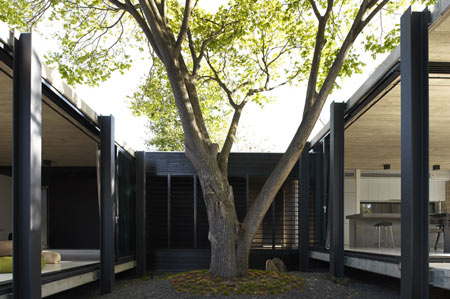
The concrete floor and roof slabs are supported above the ground to to avoid damaging the roots of mature elm and willow trees on the site.
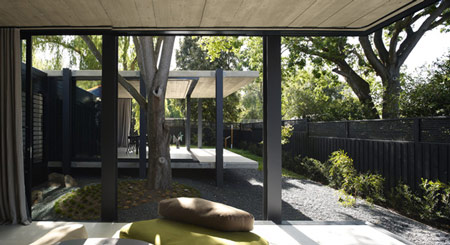
The structure encloses a courtyard around one of these trees, while sliding glass panels form a skin around the new rooms.

Above photograph is by James Coombe
Photographs are by Earl Carter except where stated otherwise.
The following information is from the architects:
ELM & WILLOW HOUSE
PROJECT DESCRIPTION
This project involves restoration and alteration to the existing Edwardian house, and the demolition and construction at the rear for a new addition. The transparency and openness of the new part is a deliberate counterpoint to the introverted Edwardian house with its dark central corridor. Our intention was to create an “Inside is outside is inside” environment, where inside and outside spaces were interchangeable elements. The project evokes a certain reference to the Farnsworth House by Mies van der Rohe, and many courtyard houses in Melbourne by McGlashan and Everist.

The two mature Elm and Willow became the constraints to the project. They informed the arrangement of our new addition, and together with passive solar orientation the result is a U-shaped plan enclosing a north-facing courtyard.
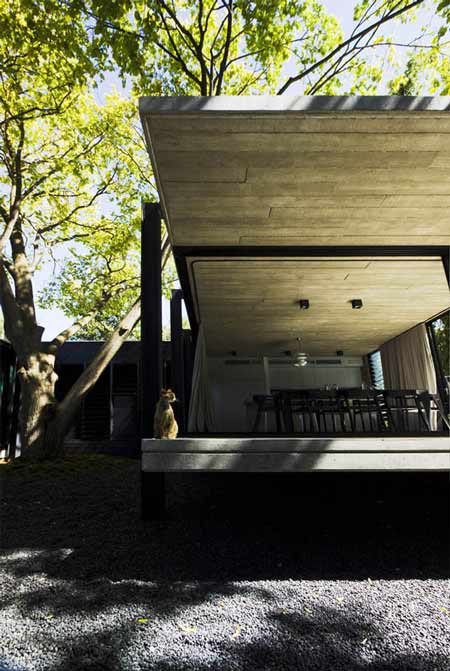
Above photograph is by James Coombe
The structure is suspended over the ground to avoid damaging the critical root zones of the two trees. The concrete floor and roof slabs are meticulously detailed, with significant input from our structural engineer, to appear and feel light, floaty and airy, a dialectic relationship between weight and material. This quality is enhanced by a skeletal structure of “skin and bones”, in which the non load-bearing glass sliding windows become a mere breathing skin between occupants and the outside world.
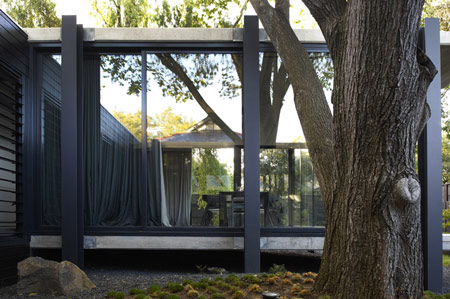
Internal planning strategies were devoted to the spatial hierarchy, in an interplay of inner and outer, and sequence of spaces. The link between the old and new is merged into the layering of spaces where inside and outside becomes one – the transparency of the borders separating interior and exterior allows the eye to perceive other elements that create the spatial order: fences, trees, stones, woods, clouds and borrowed landscape.
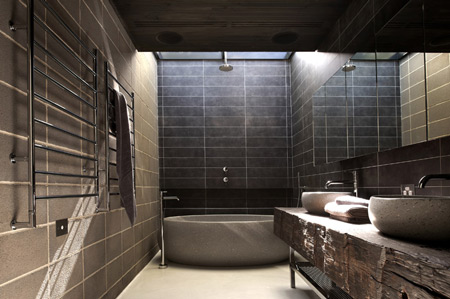
The addition has a passive ventilation system, whereby louver windows promote cross ventilation. The building materials specified are non-toxic and from renewable resources. The concrete structure provides thermal masses to the house with the slabs further insulated to minimise heat loss.
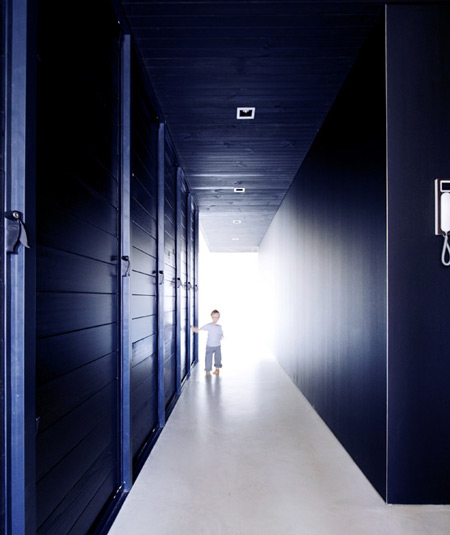
Above photograph is by James Coombe
All glazing are double-glazed to provide comfort to the interior, and the deciduous trees provide essential shading to the house during summer. Energy and water-saving fittings have been used throughout, and rain water is harvested for use in the gardens. A new carport with grid-connect solar power panels is in the design process.
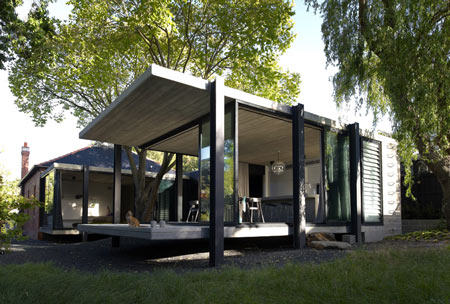
It was a total of 3 years from the first meeting with the clients to the day they moved back into the house, during which the construction took 18 months, the client found passions in designing his gardens and their first child was born. It is a house for enjoyment, living in landscape with the family, and appreciation of tranquillity, intimacy and sanctuary - which were our original brief.
